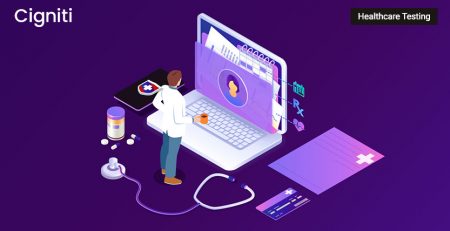7 Key Features Enabling EHR Interoperability
Electronic Health Records (EHR) Interoperability facilitates the seamless sharing of Electronic Health Information (EHI) among various systems and stakeholders, promoting patient empowerment. This feature transforms healthcare from a hospital-centric model to a patient-centric approach, emphasizing prevention, care management, and the efficient utilization of information and technology.
As per the Office of the National Coordinator for Health Information Technology (ONC), EHR Interoperability streamlines workflows, minimizing ambiguity. It enables data exchange between EHRs and healthcare stakeholders, fostering an interoperable ecosystem that enhances healthcare delivery by ensuring timely access to relevant data.
ONC prioritizes the establishment of an interoperable health IT environment and standards, focusing on four key aspects of EHR:
- User application interactions (e.g., E-prescribing)
- System-to-system communication (e.g., HL7, FHIR)
- Information processing and management (e.g., HIE)
- Integration of consumer devices with other systems and applications (e.g., Tablets, PCs)
Limitations and Challenges of EHRs
EHR interoperability has become indispensable due to the multitude of EHRs used by healthcare professionals (HPs), each with advantages and disadvantages. These systems have had several limitations, which interoperability aims to address. Some of these limitations include:
- Inadequate design and usability
- Lack of transparency and interoperability
- Limited data visualization capabilities
- Fragmented data storage
- Insufficient virtual care and telehealth functionalities
- Limited predictive analytics capabilities
While these limitations have been recognized, the evolving landscape of information and technology presents numerous challenges for EHR vendors to enhance their applications and meet the requirements of providers, patients, and regulatory standards. These challenges include:
- Integrating multiple platforms with EHRs and maintaining their up-to-date status is a primary challenge for vendors.
- Achieving frequent interoperability involves a time-consuming trial-and-error approach, which incurs workforce and development costs.
- Introducing new features requires time for the development and training of HPs.
- Patients and clinicians require anytime, anywhere access to EHI, particularly during disasters like the COVID-19 pandemic.
Only a few EHRs have managed to address some of the gaps mentioned above, albeit at a high cost for HPs. HPs perceive the lack of standardized EHI formats as an intentional effort to discourage migration to alternative EHRs. Additionally, migrating complete patient data from one EHR to another has proven to be a daunting task.
Seven Key Features Facilitating Interoperability
The following key features empower EHRs with interoperability, creating a patient-centric experience:
- Seamless Data Import/Export Capabilities: The ability to import and export data using standardized formats, such as HL7 or FHIR, is crucial in facilitating the exchange of Health Information Exchange (HIE) with other systems, ensuring compatibility and harmonization.
- Integration with Health Information Exchange: Integration with active HIE networks enables a secure and seamless exchange of HIE across different EHRs with similar capabilities, promoting efficient collaboration and continuity of care.
- Application Programming Interfaces (APIs): Open APIs establish pathways for external communication, allowing data exchange based on industry standards like HL7 or FHIR. This feature fosters interoperability, enabling integration with other EHR systems and promoting seamless data sharing.
- Real-Time Patient Data Querying: This feature provides real-time access to relevant patient information to external systems such as laboratories, imaging centers, and pharmacies. Facilitating instant access enhances care coordination and supports informed decision-making.
- Precise Patient Matching and Linking: Robust patient matching algorithms and mechanisms ensure accurate identification and linking of patient records across various EHR systems. This capability aids in correctly identifying patients from multiple sources, eliminating confusion, and enhancing data integrity.
- Audit Trails and Data Logging: Including audit trails and comprehensive data logging allows for accurately tracking and recording data access, modifications, and exchanges. This feature ensures accountability, maintains data integrity, and promotes compliance with regulatory requirements.
- Privacy and Consent Management: Patients should be able to manage their consent and privacy preferences, empowering them to control the sharing and accessibility of their health information. This feature operates within the boundaries of relevant privacy regulations, safeguarding patient privacy while facilitating necessary data sharing.
By incorporating these seven key features, EHR systems can foster seamless interoperability, prioritizing patient-centric care and enabling the secure and efficient exchange of health information.
The Evolving Landscape of Interoperability: Towards a Patient-Centric Future
The future of interoperability is steadily progressing towards achieving its goals, enabling seamless access to Electronic Health Information for healthcare professionals and patients through their preferred platforms. Recognizing that interoperability goes beyond establishing rigid rules and regulations, it also prioritizes meeting the needs of the patients who are the ultimate beneficiaries of this advancement.
In the aftermath of the COVID-19 pandemic, virtual care and telehealth have gained immense attention, driving the integration of multiple platforms to access EHRs. This integration ensures convenient access to EHI for patients and HPs, anytime and anywhere it is needed. Moreover, the integration of the Internet of Things (IoT) and Medical Devices (IoMDs), along with the utilization of Artificial Intelligence (AI), has sparked the interest of healthcare stakeholders. These advancements hold the promise of enhancing healthcare delivery and decision-making processes.
Conclusion
As the healthcare landscape evolves, EHR vendors will increasingly focus on patient-centric requirements and provide predictive analytics to support providers in delivering optimal care. This trend will create a significant responsibility for Quality Assurance and Quality Engineering teams to meticulously design and maintain these tools, ensuring they consistently have the expected performance and user experience.
Keeping pace with current trends and promoting interoperability in EHRs is expected to offer the desired efficiency that HPs aspire for shortly. Cigniti has emerged as a valuable partner in this journey, providing API and integration testing expertise for some leading EHR vendors. Their contribution plays a crucial role in ensuring the robustness and reliability of these systems, further propelling the advancement of interoperability in healthcare.
As the future unfolds, the vision of achieving seamless interoperability in EHRs remains on a steady trajectory, driven by the shared goal of placing patients at the center of care and empowering HPs with enhanced tools and capabilities.
Need help? Contact our Healthcare and Life Sciences domain experts to learn about enabling EHR interoperability.





Leave a Reply